#preventative chemotherapy
Text


The most powerful moment of the coronation of King Charles III was not the gold glittering off carriages or epaulettes — not the pomp and show and signifiers of power.
It was precisely their opposite: when Charles shed his gold robes and stood in a thin white shirt, his frail humanity implied.
Then a screen was erected around him and, shielded, he had a private consultation with the Archbishop of Canterbury, who dabbed anointing oil with his hands on Charles’s bare breast.
"This was the most solemn and personal of moments,” Buckingham Palace said.
Charles was bare before God, in privacy, God being one of the last beings with no need to sign a non-disclosure agreement.


The Princess of Wales looked on as the screen shielded her father-in-law.
By contrast, she was at that point the most magnificent she had ever been, swathed in layer upon layer of regality, the dress, the robes, the hanging chains, headpiece and ribbons all serving to move the viewing gaze — subjects in every sense — from our awareness of Catherine Middleton with her everyday human DNA and towards the shared fiction of her transcendent queenliness.
Less than a year later, this moment is remembered with new and terrible power.
It is spring again, but it’s a time of hard Lenten moral reflection for us as a nation, in relationship to our royals, as well as an ever more voraciously unprivate modern celebrity culture.
Both the King and the princess have cancer, the latter’s disclosed by Catherine in an unprecedented video address on Friday, March 22.
Catherine’s speech was something of a plea bargain in which she traded not only her customary silence but her most personal of health ordeals in order to put an end to toxic rumours swirling online that had become in tone like an unruly mob rattling at the palace gates.
Or rattling at the figurative locks on her medical notes, with three workers at the London Clinic, where she and the King were treated, suspended and under investigation for allegedly trying to access her records (hers, it is important to note, the King’s were unmolested).

📷: Getty Images
What was so powerful about the anointing of the King was the sacredness of that space in which he could be fully human away from observation and judgment.
There should be another one-on-one consultation that is sacred, where anyone, from King to princess to pauper, can expect to be shriven in total privacy, and that is the sanctity of the medical room.
It used to be that priests were our only bound confidants, we could trust them to be privy to all our spiritual ills.
Now doctors are our secular priests: bound by law and ethics to enshrine confidentiality at the heart of the patient relationship.
As a result, our medical privacy in an age of oversharing and online surveillance feels both stranger and more necessary.
If we knew our every GP-inspected rash was to be posted on TikTok for the nation, many of us would quite literally die of embarrassment.
The King’s appointment behind the three-sided screen can now be viewed through the lens of royal illness.
The lavishly embroidered panels and expensive white shirt now replaced by the flimsy three-sided ward screen on wheels and thin hospital gown that can humble us all.
But it also enacts a principle at the very heart of becoming the monarch.
The medical-like screen is erected in the coronation to tell us there are some places the public cannot go; to tell us that there are sacredly personal moments in which a person, any person, however swathed in our projections of power, needs to be nakedly human.
Otherwise, they will go mad. We need to make sure the screens are erected around Catherine now.

Much is said, quite a lot of it by Prince Harry himself, of the dangers of the wives of the princes repeating the tragic history of their mother, Princess Diana, hunted by photographers.
He remains phobic to any hint of tabloid persecution or paparazzi chase. But this is a sideshow, even an anachronism in 2024.
He and others have not recognised how the “chase” has changed. Who needs paparazzi when there are a billion citizen hacks ready to take pictures with their phones, in case a convalescing woman nips to a Windsor farm shop with her husband?
Instead, the appetite now is not to see but to know.
The royals used to have a contract with the public: we pay for them, and in return, they give us their presence.
Nearly all of their official job is to do with surface: to show up, to put in appearances at a set number of functions, whether at the opening of parliament or the opening of a leisure centre.
But now parts of the online mob seem to be staging a coup. We want more than the surface, we want to puncture the skin barrier of the royal family and occupy from the inside.
The “fans” have become an invasive virus. The royal analogy is often that they are trapped in a gilded zoo. This new model, instead, casts the royals more as lab rats.
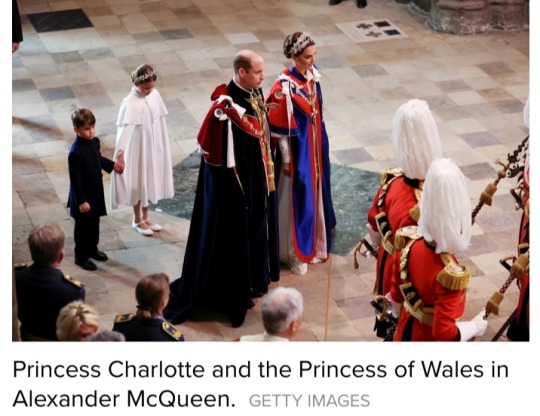
When Catherine disappeared from view in January after announcing a “planned abdominal operation,” the response from internet truthers was one of irate entitlement.
They are now the 1980s tabloids: ravening for intimacies and making stuff up when thwarted.
This wasn’t the boomer generation, who are both more respectful of the royals and more private about their own health.
It was the fortysomething mothers frustrated when they can’t track the phone location of everyone in their life; or the twentysomethings on Snap Map.
Both desperate for their personalised new Netflix season of “The Royals” to drop.
Catherine presents with such stoicism and dignity, it is easy to forget where this new invasiveness started: when she was pregnant with Prince George in December 2012 and hospitalised for extreme morning sickness.
While she was sleeping on the ward, a radio station in Australia rang the hospital switchboard pretending to be the Queen.
They broadcast the nurse’s comments about Catherine’s “retching.”
One could only find this prank funny if Catherine had already — a young, wretchedly ill, pregnant woman — been dehumanised.
George is now ten and his mother hospitalised again, and in that decade, the physical security of ill royals may have tightened but their claim to bodily autonomy seems to have weakened.
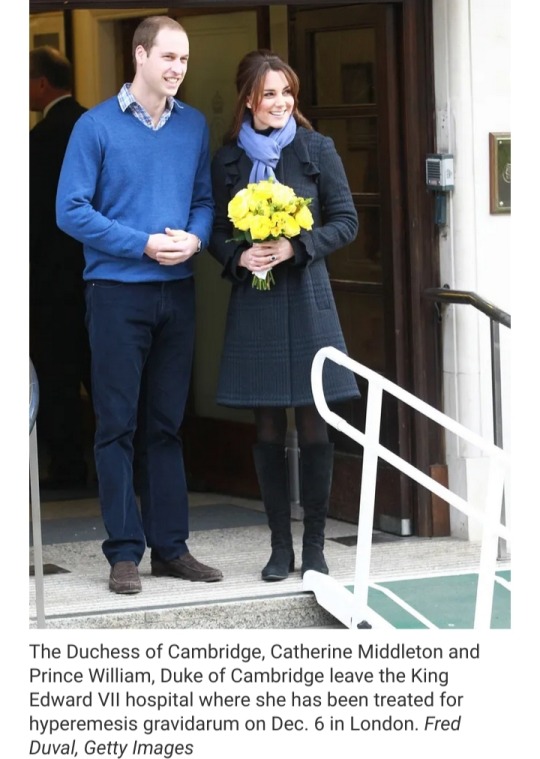
Some say Kensington Palace “brought it on themselves” by their wish for discretion; this claim is duplicitous.
The late Queen Elizabeth II became increasingly debilitated in her final years with not much detail ever given; just as her father, King George VI, died without disclosing his lung cancer.
I’m glad that the British do not subject their heads of state to the same publicised medical reports as the president of the United States; one shouldn’t have to present a stool swab to sit on the throne.
No, instead the apparent justification of all those clicking and posting conspiracy theories “worried for Catherine’s welfare” was this sinful truth.
As a beautiful, 42-year-old mother of three, her drama was more box office than the ailments of those older, a pound of her flesh was worth more.
Pity, Susan Sontag said in her 1978 book Illness as Metaphor, is close to contempt.
Back then cancer was still taboo. Those around the patient, Sontag says, “express pity but also convey contempt.”
Ask any cancer patient and they will say they don’t want pity: it is too isolating, it sets them apart, an unwanted privilege.
This is why the video plea of Catherine was one of affinity, rather than pity or privilege.
Last year, she sat in robes in Westminster Abbey at the coronation of her father-in-law, next to her future king son and future king husband.
In her video address last week, she sat on a classically English garden bench, pale, alone and in jeans, as bare of pomp as any royal can be.
No mention of kings or titles, just Diana’s ring on her hand.
Rather she gave an appeal, parent to parent, human to human, about her “huge shock” and her care for her “young family.”
And, finally, her kinship with anyone who lives in a vulnerable human body susceptible to a democratic illness like cancer, “you are not alone.”
Or, to paraphrase Richard Curtis:
“I’m just a girl, standing in front of a public, asking for some time to endure gruelling chemotherapy."

NOTE: Additional photos have been included in this article.
#King Charles III#Prince William#Prince of Wales#Princess of Wales#Catherine Princess of Wales#Catherine Middleton#Kate Middleton#British Royal Family#cancer#chemotherapy#preventative chemotherapy#social media#fake news#click farms#bots#trolls#disinformation#misinformation#viral#abdominal surgery#celebrity culture
77 notes
·
View notes
Text
Catherine's Good News 🎗
Curable Cancer 🎗
no metastasis 🎗
lymph nodes = cancer free!!! 🎗
margins = cancer free!!! (margins of removed malignant tissue are cancer free) 🎗
malignancy was isolated to 1 area & surgically removed 🎗
adjuvant treatment offered as an option in lower doses of systemic poison to prevent recurrence 🎗
Catherine will overcome this malignancy 🎗
Catherine's bad news 🎗
cancer is out however pathology revealed cancer cells had "access" to her lymphatic channels 🙏
preventative chemotherapy is still poison🙏
Adjuvant Treatment will guarantee zero recurrence

#preventative chemotherapy#healing#hope#full time princess#survivor princess#the prince and princess of wales#catherine the princess of wales#prince william#BRF#cancer happens#adjuvant treatment#cancer free#we pray#cured#Christ is BIGGER than cancer
65 notes
·
View notes
Text
In topically relevant news:
Did y'all know the average wait time to start chemotherapy in the UK is 48 days in England, 57 in Northern Ireland, 58 in Wales and 65 in Scotland?
#cancer#the royal family#inequality#like yeah sucks for Kate & I sympathize#but let's also acknowledge her huge privilege#that she apparently got to start on *preventative* chemotherapy with absolutely no wait time
14 notes
·
View notes
Text
Breast Cancer is the commonest cancer in females worldwide. It is the second most common cancer in females in India after cancer of Cervix, but it is the most common cancer in the urban areas in females in India. With increasing awareness and advancing treatment strategies the survival of breast cancer has improved.
#affordable cancer hospital in delhi#best cancer hospital in delhi#cancer second opinion in delhi#cancer specialist in delhi#chemotherapy cost in delhi#palliative care in delhi#onco dermatology in delhi#targeted therapy in delhi#affordable chemotherapy in delhi#cancer surgeon in delhi#breast cancer screening#Breast Cancer Prevention and Screening
0 notes
Text
Clinical Trials In Aurangabad: Exploring Options For Advanced Cancer Care

Introduction:
When dealing with cancer, finding effective treatments is vital. Clinical trials offer desire for sufferers looking for advanced care alternatives. In Aurangabad, these trials pave the way for modern treatments, imparting new avenues for preventing cancer. Let’s delve into what medical trials entail and how they are able to benefit sufferers in their adventure closer to restoration.
Understanding Clinical Trials:
Clinical trials are research studies that take a look at new treatments or procedures to determine their safety and effectiveness. These trials follow strict suggestions and contain volunteers who agree to participate. They play a critical function in advancing scientific understanding and improving patient outcomes by way of evaluating novel treatment plans and interventions.
Benefits of Participating:
Participating in a medical trial can provide numerous blessings to patients. They may additionally gain get admission to modern treatments not yet to be had to the general public, receive near tracking from clinical specialists, and make contributions to the development of cancer care. Additionally, some trials cowl the charges of experimental treatments, easing the economic burden on patients and their households.
Opportunities in Aurangabad:
In Aurangabad, clinical trials offer desire for individuals looking for modern most cancers remedies. These trials encompass various cancer sorts and remedy modalities, catering to numerous affected person wishes. By partnering with official healthcare institutions and studies centers, Aurangabad gives sufferers get right of entry to to a wide array of clinical trial options, expanding their treatment opportunities.
OncoRelief Cancer Clinic: A Hub for Clinical Trials:-
OncoRelief Cancer Clinic, led with the aid of Dr. Aditya Mantari, stands as a leading institution in Aurangabad, presenting access to modern-day scientific trials. With Dr. Mantari’s understanding in surgical oncology and commitment to patient-centered care, OncoRelief provides a supportive surroundings for individuals thinking about participation in medical research. Through collaborative efforts with renowned research organizations, OncoRelief Cancer Clinic allows opportunities for patients to discover modern treatments and make a contribution to the advancement of most cancers care.
Conclusion:
In conclusion, clinical trials in Aurangabad constitute a beacon of desire for individuals in search of advanced most cancers care. By collaborating in those trials, sufferers now not simplest gain get entry to to novel remedies but additionally contribute to the collective effort to combat most cancers. With institutions like OncoRelief Cancer Clinic and specialists like Dr. Aditya Mantari leading the way, Aurangabad remains at the forefront of clinical studies, providing sufferers opportunities for recovery and development. If you or a loved one are going through cancer, take into account exploring the possibilities provided by way of scientific trials — it can be a transformative step on your journey toward healing.
For More Info Visit Our Site:- oncorelief.in
#best cancer doctor aurangabad#best cancer hospital aurangabad#best gynec onco surgeon aurangabad#breast cancer surgeon aurangabad#chemotherapy specialist aurangabad#gi onco surgeon aurangabad#head neck cancer surgeon aurangabad#chemotherapy#radiation therapy#cancer prevention
0 notes
Text
Hair Loss, Prevention, Symptoms, Diagnosis & Treatment
Alopecia areata, a diagnosis of exclusion. Androgenetic alopecia is the most common form of hair loss among both males and females. Telogen effluvium, which is caused by significant stress or sudden weight-loss from dieting or other medical condition that affects the body's ability to metabolize protein, producing a large amount of a hormone called prolactin Follicular damage due to chemicals applied to the scalp Chronic seborrhea Eczema Vitiligo Hair grooming habits Hats Tight braids or ponytails Harsh washing agents Exposure to ultra-violet rays Intense sweating Drugs (cocaine) Depressive disorder Besides some rare genetic conditions, the most common causes of hair loss are drug-related, hormonal imbalances or issues, or nutritional deficiencies.
0 notes
Text
Preventing kidney cancer involves a combination of healthy lifestyle choices and early detection strategies.

#Kidney Cancer Treatment#Renal Cell Carcinoma Treatment#Surgery for Kidney Cancer#Chemotherapy for Kidney Cancer#Preventing Kidney Cancer
0 notes
Text
Colorectal Cancer: Important Types, Risk Factors, Treatment, And Prevention
Colorectal Cancer: Important Types, Risk Factors, Treatment, And PreventionIntroductionWhat is Colorectal Cancer?Types of Colorectal Cancer Adenocarcinomas Carcinoid Tumors Gastrointestinal Stromal Tumors (GISTs) Lymphomas SarcomasRisk Factors for Colorectal Cancer Age and Gender Family History Personal Medical History Lifestyle Factors Inflammatory Bowel Disease (IBD)Symptoms and Early Detection…

View On WordPress
#Adenocarcinomas#Bowel Cancer#Carcinoid Tumors#Chemotherapy for Colorectal Cancer#Colon Cancer#Colorectal Cancer#Colorectal Cancer Awareness#Colorectal Cancer Diagnosis#Colorectal Cancer Prevention#Colorectal Cancer Screening#Colorectal Cancer Staging#Colorectal Cancer Surgery#Colorectal Cancer Treatment#Early Detection of Colorectal Cancer#Gastrointestinal Stromal Tumors#Genetic Risk of Colorectal Cancer#Healthy Diet for Colorectal Cancer#Immunotherapy for Colorectal Cancer#Lymphomas#Radiation Therapy for Colorectal Cancer#Rectal Cancer#Risk Factors for Colorectal Cancer#Sarcomas#Symptoms of Colorectal Cancer#Targeted Therapy for Colorectal Cancer
0 notes
Text

This infographic provides important information about renal cancer, a type of cancer that develops in the cells of the kidneys. It includes details about the symptoms, types, risk factors, diagnosis, treatment, and prevention of renal cancer. Additionally, it highlights the expertise of Dr. Mayur Dalvi, an experienced oncologist who specializes in the treatment of renal cancer.
#Renal cancer#kidney cancer#Dr. Mayur Dalvi#oncology#symptoms#types#risk factors#diagnosis#treatment#prevention#surgery#radiation therapy#chemotherapy#targeted therapy#early detection#medical history#imaging tests#biopsy#blood tests#urine tests#high blood pressure#obesity#smoking#family history#Wilms tumor#Transitional cell carcinoma#Renal cell carcinoma#CT scan#MRI#ultrasound
1 note
·
View note
Text
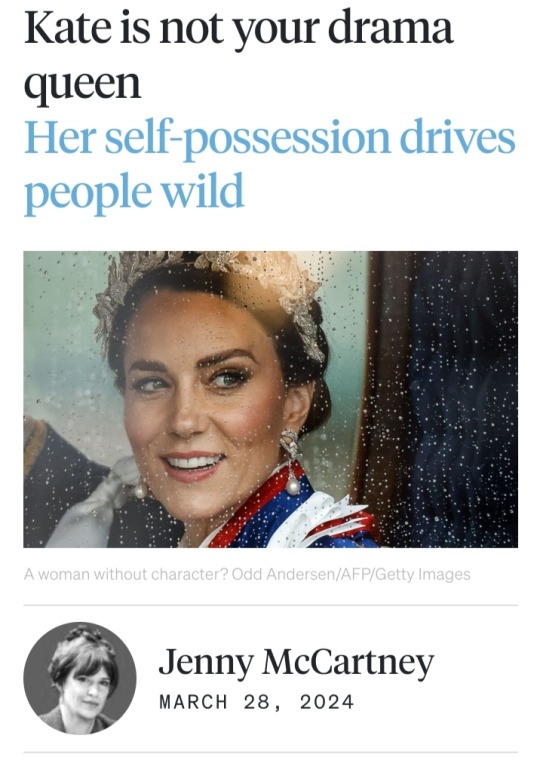
Just over a decade ago, the late novelist Hilary Mantel (6 July 1952 – 22 September 2022) delivered a lecture to an event at the London Review of Books and triggered national outrage.
In the course of a talk on “Royal Bodies,” which ranged widely across royal women from Anne Boleyn to Marie Antoinette and Princess Diana, she had made what many perceived as disparaging remarks about Kate Middleton, then the Duchess of Cambridge.
The Duchess, she said, appeared to have been “designed by a committee and built by craftsmen, with a perfect plastic smile and the spindles of her limbs hand-turned and gloss-varnished."
Indeed, Mantel said, Kate “seems to have been selected for her role of princess because she was irreproachable: as painfully thin as anyone could wish, without quirks, without oddities, without the risk of the emergence of character.”
At this, the newspapers were soon in uproar.
The prime minister David Cameron called the comments “completely misguided and completely wrong” and the Labour leader Ed Miliband agreed they were “pretty offensive.”
Mantel doggedly refused to back down, saying that her remarks had been twisted out of context, and that she was in fact writing with sympathy about the perceptions that are forcefully projected on to royal women, the cage in which they are held to be goggled at.
That was true but also perhaps not the entire truth, for there was still a perceptible trace of authorial vinegar in the portrait:
Which of us would be happy to learn, even in sympathy, that we were held at low risk for “the emergence of character”?
Royals are public as well as private figures, of course, and authors are free to hang intellectual ideas on them to try out, as designers do with clothes.
Yet while much of the lecture was sharply perceptive, I didn’t agree with the portrait of Kate.
That word “selected” had rendered her passive, when in fact her behaviour thus far had suggested both an active intelligence and an unusual degree of self-discipline.
The context of her entry into “The Firm” was different from that of other royal brides.
Unlike Diana, who had barely emerged from the fractured chrysalis of her troubled aristocratic family when she first met the much older, more worldly Prince Charles, Kate was a contemporary of Prince William’s at the University of St Andrews.
Her family background, which appeared warm and supportive, was comfortably middle-class.
She seemed generally cheerful and unruffled, even when the press was at the barbed peak of its “Waity Katie” hysteria, trying to goad Prince William into a proposal or abandonment.
After the wedding, in her approach to royal duties, she clearly took the role she had inherited with marriage seriously.
The royal whose attitude her own most resembled was the late Queen Elizabeth II, who had long understood the essential nature of the job:
To turn up to public events looking the part, intuit precisely what was needed — gravitas, fun, consolation or reassurance — and deliver it while keeping one’s personal emotions on the back burner.
This is what a monarchy demands, and the ability to act as an impeccable interpreter of the public mood, year after year, is a particular and testing art.
A few have a natural aptitude for it, but most of us do not, and would quickly find its scrutiny and restrictions intolerable.
Grace under consistent pressure is an admirable quality.
Were a ballet dancer to execute a string of flawless performances, or a pilot to conduct numerous flights without incident, it would not be deemed evidence of an absence of character: quite the opposite.
Yet in Kate — especially for those who increasingly conduct their lives online — serene self-possession seems to drive a proportion of onlookers insane: what lurks behind it, what dark secret is waiting to destroy it, how best might it be disrupted?
The uncomfortable truth is that what many people deeply crave in a young and beautiful royal wife and mother is not competence, but crack-up.

The increasingly bizarre treatment of Kate, or the idea of Kate, is connected to the most dominant phenomenon of our age: a cultural prioritising of drama over duty.
The supply of drama has spilled beyond the confines of the novel, theatre, cinema, or television to become a commodity on which our public figures are judged.
When Mantel spoke of Kate’s apparent absence of emerging “character,” she was assessing her primarily through the hungry eyes of a novelist.
In books, central female characters often generate dramatic tension by chafing against their circumstances, by the intensifying dazzle of their discontents, something that Kate refused to transmit.
In contrast, Mantel described Diana as a “carrier of myth”: Diana, publicly trapped in the disappointments of her marriage, certainly carried more plot twists than any author had a right to expect.
Unfortunately for her, the final one was her shockingly premature death.
Set against this artistic conception of “character” — distinctive qualities or flaws that, one way or another, deliver drama — is the societal judgement “of good character,” meaning someone who is broadly reliable and respected in relation to their behaviour to others.

In recent years, the electorate, in line with Neil Postman’s warning in his 1985 book, Amusing Ourselves To Death, has proved increasingly ready to select the former over the latter, even to the marked detriment of our civic health.
The former prime minister Boris Johnson instinctively understood it as his job not to deliver the detail of workable policy but to satisfy the public’s appetite for story:
“People live by narrative,” he once told UnHerd’s Tom McTague.
In the US, Donald Trump — that relentless generator of low mockery and high fury — is now running for a second term as president, after his first one ended in his supporters storming the Capitol building.
Men are often permitted to survive the frantic generation of drama: it is everyone around them who suffers.
Yet women — in art and life — have a greater tendency to be destroyed by it.
There is no strutting female equivalent of the male “hellraiser,” but rather a woman who, soaked in the crocodile tears of the tabloids, is tragically “causing concern” among friends.
Art and its audiences have always relished the restless struggle and disintegration of female characters who are, or become, unmoored from the harbour of marriage and children.
Flaubert’s Emma Bovary — her imagination inflamed by reading novels — is bored with her marriage and disenchanted with motherhood.
She seeks solace in affairs and excessive spending, the consequences of which hasten her suicide.
Zola’s Nana, a courtesan who ruthlessly captivates Parisian society, has her beguiling face eaten away by smallpox.
Janis Joplin and Amy Winehouse, immolated on their blazing talent, are hung posthumously high in the musical hall of fame, next to Sylvia Plath in the poetry section and Marilyn Monroe in cinema.
In Jean Rhys’s Good Morning, Midnight, a middle-aged English woman called Sasha Jansen, mourning an unhappy marriage and a dead child, finds herself in Paris, a vulnerable drifter seeking solace from stray men.
Rhys herself, who died at 88 after a precarious but surprisingly long life, had much in common with her literary creations.
As the writer and editor Diana Athill crisply put it:
“Jean was absolutely incapable of living, life was just hopelessly beyond her.
When she was young, she floated from man to man in a hopeless way… by the time she was old, she floated from kind woman to kind woman.”
In Rhys’s latter years — hard-drinking, irascible and impoverished — Athill and a small group of female friends formed what they called “The Jean Rhys Committee,” which met regularly to ask “what should we do next?”
Rhys’s claim to such loyalty, I suppose, was the weight of her literary talent, her ability to exert an odd kind of fascination, and the fortunate soft-heartedness of her friends.
The dramatic collided with the dutiful and was kept alive by it.

From what I can see, the Princess of Wales exists at the opposite end of the feminine spectrum from Jean Rhys.
Pinned firmly in place by her royal obligations, her wealth, her marriage, and three children, she belongs to the realm of the respectable and dutiful rather than the erratic and dramatic.
She is not a “character” in the artistic sense, nor does she desire to be, but both a survivor and upholder of an institution:
Hers is the territory of the prompt thank-you note, the kept promise, the commitment to public service, the uncomplicated pleasure in children, the stoic endurance of difficult times in the hope that better ones will come along soon.
The public senses an emotional solidity in her, and it is partly why she is held in broad esteem.
In this age of insistent self-definition, duty to others might be an unfashionable concept, but it is nonetheless one that keeps families and institutions from chaos and collapse.
With the advent of the internet, however, anyone with a keyboard can become a form of author, with the freedom to insert a toxic form of drama into real-life situations.
What was extraordinary, during the Princess of Wales’s recent health problems, is how speedily and carelessly such speculations overrode the bounds of decency.
It was already known that she had undergone major abdominal surgery and was taking time to recover.
And yet — egged on by the participation of silly celebrities and malicious US comedians — conspiracy theories about cosmetic surgery and affairs and nervous breakdowns spread like knotweed.
According to social-media researchers, these were also vigorously introduced and amplified by fake accounts set up on Twitter and TikTok, some associated with Russia-linked disinformation eager to spread the termites of mistrust and doubt in Western institutions.
Only the Princess of Wales’s revelation of cancer, which carries a testing drama all its own, served to shut up the majority of them.
Unlike these callous gossips, Mantel recognised her own complicity in dehumanising royalty.
Upon encountering the late Queen, the novelist said: “I passed my eyes over her as a cannibal views his dinner, my gaze sharp enough to pick the meat off her bones.”
The Queen looked back at her, she said, briefly hurt. Mantel warned of the way in which “cheerful curiosity can easily become cruelty” precisely as it has done in recent weeks.
Her talk concluded with a prescient instruction for those who comprehend monarchy mainly as a source of entertainment: “I’m asking us to back off and not be brutes.”
In the midst of treatment and recovery, the most hitherto stable of royal women could be forgiven a keen sense of injustice:
Her job description, it seems, must now include the ability to weather the online public’s fits of brutish mania for drama.
With its contempt for duty, and its savage appetite for story, it is hungry to chew up far more than just the Princess of Wales.

NOTE: Additional photos have been included in this article.
#Princess of Wales#Catherine Princess of Wales#Catherine Middleton#Kate Middleton#British Royal Family#cancer#chemotherapy#preventative chemotherapy#disinformation#misinformation#fake news#trolls#bots#click farms#targeted attack#malicious gossips
92 notes
·
View notes
Text


OCTOBER
BREAST CANCER AWARENESS MONTH
#breastcancerawareness#doctorsinbahrain#manama#bahrain#bestdoctor#awarness#internalmedicine#prevention#breast cancer#chemotherapy#cancer
0 notes
Text
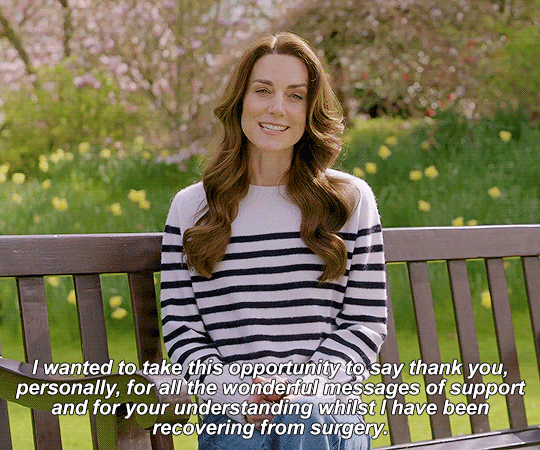


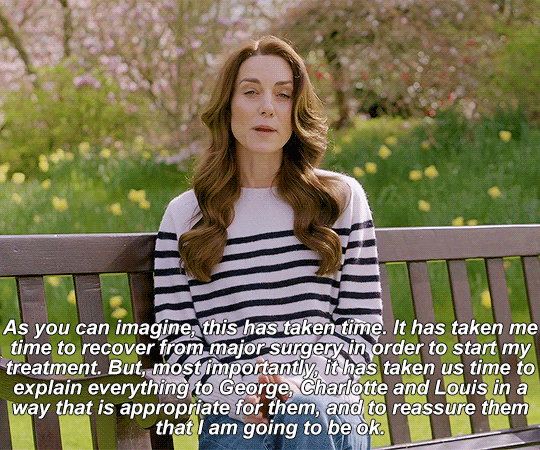
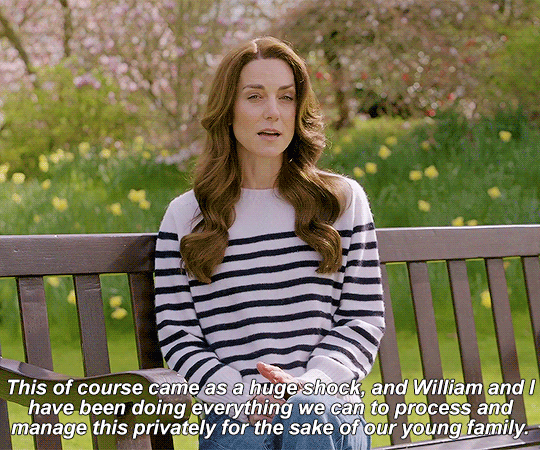
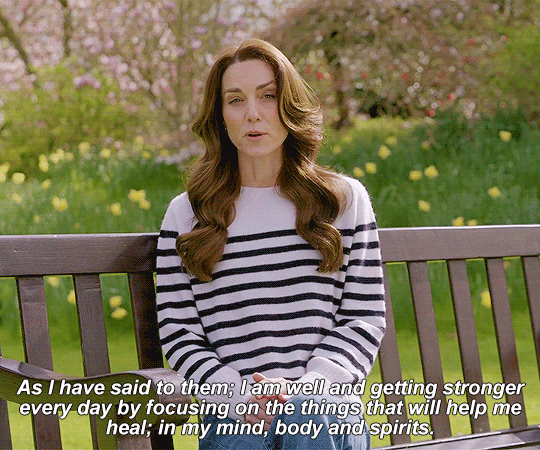
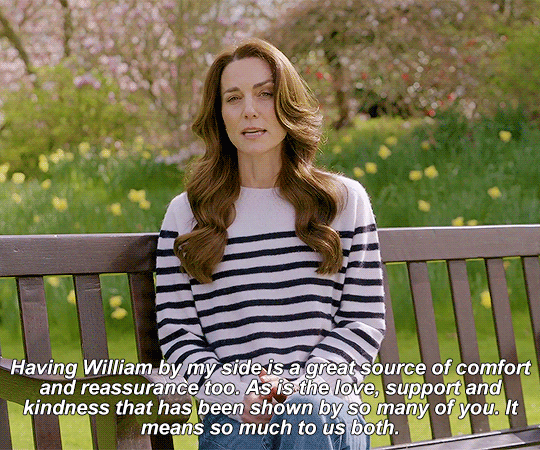

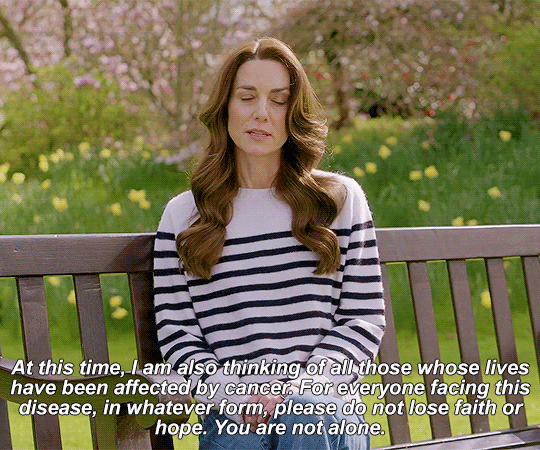
British Royal Family - The Princess of Wales in a video message, has announced that she has been diagnosed with cancer and is undergoing 'preventative' chemotherapy. | March 22, 2024
#royaltyedit#theroyalsandi#princess of wales#princess catherine#princess kate#catherine princess of wales#british royal family#my gif#wishing you a speed recovery
463 notes
·
View notes
Text
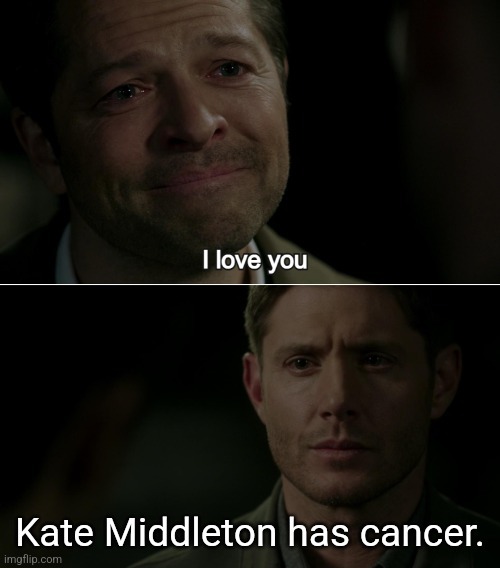
“In January, I underwent major abdominal surgery in London and at the time, it was thought that my condition was non-cancerous,” she said in a video announcement.
“The surgery was successful. However, tests after the operation found cancer had been present. My medical team therefore advised that I should undergo a course of preventative chemotherapy and I am now in the early stages of that treatment.”
source 1
source 2
source 3
#destiel meme news#destiel meme#news#world news#tw cancer#cancer#kate middleton#princess kate#british royal family#royal family#chemo tw#chemotherapy#united kingdom
197 notes
·
View notes
Text
What is immunocompromisation?
Being immunocompromised means you have a weaker immune system than most people. There are two main ways people become immunocompromised
1. Medical Conditions
Certain medical conditions cause your immune system to be weaker. Some examples include:
Immunodeficiencies- A category of conditions causing a lower number of or lower efficacy of immune cells. This category is divided into two subcategories: primary immunodeficiency and secondary immunodeficiency. Primary immunodeficiency is a subcategory consisting of hundreds of different conditions all causing a lower number of immune cells. Secondary immunodeficiency is a smaller category consisting of conditions where a person lacks immune cells due to other causes such as malnutrition.
HIV/AIDS
Some cancers
2. Medications
There are two main types of medications that result in being immunocompromised: Immunosuppressants and chemotherapy
Immunosuppressive medications- Immunosuppressive medications are medications designed to suppress your immune response. These can work in many different ways with some targeting a broad range of immune cells and others being highly specific. These medications are often used for organ transplant recipients and people with moderate-severe autoimmune diseases. Some medications in this category include: organ transplant medications, biologics, and high dose corticosteroids
Chemotherapy- Chemotherapy often comes with the effect of preventing new fast-dividing cells from being produced. This is why hair loss is such a common side effect of chemotherapy. Immune cells are fast dividing and therefore frequently are unable to be produced while on chemotherapy
The effects of immunocompromisation
Immunocompromisation has a large range of effects depending on the reason someone is immunocompromised. The most common effects are an increased susceptibility to illness and cancers. Increased susceptibility to illness can look like:
Frequent illnesses
Illnesses that are more severe than they would be for other people
Recurrent infections
Infections that don't respond to medication
Delayed response to infection
Infections that last longer than usual
Some people are more susceptible to certain types of infections. For example anifrolumab, a biologic used for lupus, makes people more susceptible to herpes zoster and respiratory tract infections while prednisone, a corticosteroid, increases risk of infection across the board. This occurs due to different causes of immunocompromisation affecting different immune cells with different roles in preventing and responding to infection.
Grades of severity
Recently the term "moderately and severely immunocompromised" has been used in covid-19 resources. Certain factors are considered to make someone moderately or severely immunocompromised, these include:
Advanced or untreated HIV infection
Moderate or severe primary immunodeficiencies
Hematologic malignancies
Active treatment for solid tumors or hematologic malignancies
Immunosuppressant medications used for solid organ or islet transplants
CAR-T cell therapy or hematopoietic stem cell transplantation
Treatment with alkylating agents, antimetabolites, high-dose corticosteroids, chemotherapeutic agents, TNF blockers, and other biologic agents that are immunosuppressive or immunomodulatory
What immunocompromisation is not
It's worth noting that getting sick frequently or getting seriously sick from illnesses that are usually mild is a warning sign for being immunocompromised but does not inherently make you immunocompromised. Some people are just more susceptible to illness without being immunocompromised.
Having minimal response to an infection that is usually more serious is a sign of a strong immune system, not a weak one.
Being immunocompromised is also not the same as being high risk for serious infection. All immunocompromised people are high risk but not all high risk people are immunocompromised. Immunocompromisation is specifically when someone is high risk because their immune system is weak. Particularly in regards to covid, there are many conditions that make you higher risk that do not involve a weak immune system.
Autoimmune diseases do not automatically make you immunocompromised. Something being a disorder of the immune system does not mean that you are immunocompromised because immunocompromised means a weaker immune system not a malfunctioning immune system.
#someone in my notes was claiming fibromyalgia makes you immunocompromised#heres some info about what being immunocompromised actually is#chronic illness#chronically ill#cripple punk#cripplepunk#physical disability#physically disabled#immunocompromised#immunocompromisation
153 notes
·
View notes
Text
Gynecological Cancer Specialist In Aurangabad: Offering Hope And Expertise

Introduction:
Gynecological cancers pose first-rate demanding situations to girls’s fitness, frequently necessitating specialized care and personalized treatment methods. In Aurangabad, individuals grappling with these diagnoses may also locate solace and steerage inside the understanding of committed oncologists. In this weblog, we explore the function of gynecological most cancers experts in Aurangabad, losing slight at the avenues for desire and recovery they offer to patients and their families.
Understanding Gynecological Cancers:
Embody diverse malignancies affecting the female reproductive device, including ovarian, cervical, uterine, vaginal, and vulvar cancers. Each kind offers unique traits and might display up with wonderful signs, along with ordinary vaginal bleeding, pelvic pain, or changes in urinary conduct. Early detection recurring screenings and cognizance of functionality chance factors are important in enhancing consequences for ladies at danger.
The Importance of Specialized Care:
When faced with a diagnosis of gynecological cancer, looking for care from a consultant with know-how in this discipline turns into vital. Gynecological oncologists possess specialized schooling inside the control of those malignancies, imparting complete assessment, superior remedy modalities, and compassionate aid during the journey. Their holistic approach addresses not most effective the physical aspects of the disease but also the emotional and psychological wishes of patients and their cherished ones.
OncoRelief Cancer Clinic: A Beacon of Hope
In Aurangabad, individuals in need of specialized care for gynecological cancers can turn to OncoRelief Cancer Clinic, a renowned institution dedicated to providing comprehensive oncology services. This content reads as if it is human-written. When faced with a diagnosis of gynecological cancer, looking for care from a consultant with know-how in this discipline turns into vital. This content reads as if it is human-written. Gynecological oncologists possess specialized schooling inside the control of those malignancies, imparting complete assessment, superior remedy modalities, and compassionate aid during the journey. This content reads as if it is human-written. Their holistic approach addresses not most effective the physical aspects of the disease but also the emotional and psychological wishes of patients and their cherished ones. Led by Dr. Aditya Mantari, a distinguished gynecological cancer specialist with five years of experience in surgical oncology, OncoRelief Cancer Clinic stands as a beacon of hope for individuals facing these daunting diagnoses.
Dr. Aditya Mantari: A Trusted Partner in Healing
Dr. Aditya Mantari’s expertise in gynecological oncology, coupled with his unwavering dedication to patient-centric care, makes him a trusted partner in the journey towards healing. With a keen focus on individualized treatment plans and a compassionate approach to patient support, Dr. Mantari empowers women to confront their diagnoses with courage and resilience. Through his leadership at OncoRelief Cancer Clinic, he ensures that every patient receives the highest standard of care, fostering hope and optimism in the face of adversity.
Conclusion:
In conclusion, the presence of a dedicated gynecological cancer specialist in Aurangabad offers a ray of hope to women confronting these formidable diseases. With institutions like OncoRelief Cancer Clinic and experts like Dr. Aditya Mantari at the helm, individuals can access unparalleled expertise, advanced treatment options, and compassionate support on their journey towards healing. Remember, you are not alone in this fight — reach out, seek guidance, and embrace the hope that comes with expert care.
For More Info Visit Website:- www.oncorelief.in
#best cancer doctor aurangabad#womens health#gynecological care#best cancer hospital aurangabad#radiation therapy#cancer prevention#gynecological health#gynecological devices market#best gynec onco surgeon aurangabad#breast cancer surgeon aurangabad#chemotherapy specialist aurangabad
0 notes
Text
Danny Phantom X DC Batman Angst prompt
Here's a little angsty fic idea for you all.
Bruce has his computer set up to notify him about anything that deals with the Lazarus Pit. He's taking no chances with that glowing green water! The batcomputer would notify him if any chemical trace from the Lazarus Pit just pops into the system. It doesn't matter where, from forensics collecting evidence from a crime scene, a criminal's drug testing, or a scientist just investigating a petri dish.
When the batcomputer notifies him that it picked up traces of the chemical that's found in the Lazarus Pit. He immediately starts investigating. He finds that it's been found in a batch of medicine in one of Gotham's hospitals (in which he funds) Investigating even more, it turns out the the chemical formula of the Lazarus pit has been modified and what's even more interesting is that the the patients that had already been administered the medicine have shown small signs of improving health with no side effects.
With some detective work, Batman is able to trace it back to Mr. Freeze. When confronting the villain on what he's found. Mr. Freeze says nothing. He's completely silent. Batman figures that whatever Mr. Freeze was working on had to do with trying to cure his wife hence the medicine that's been improving sick people's health. But Mr. Freeze has no ties to knowing anything about the Lazarus Pits. So through a bit more investigating, Batman is able to have a lead and traces it down to an apartment building. When investigating it, he finds Danny.
It turns out, Danny and Jazz moved to Gotham in an effort to prevent Danny from being taken by the GIW, be experimented on by their parents, or be controlled by Vlad. They were sitting pretty in Gotham for a couple of months until Jazz's health started to take a turn for the worse. When Batman takes a look into Danny's apartment and sees Jazz. He immediately puts it together.
Jazz has cancer.
The medicine that had traces of the modified Lazarus Pit compound was chemo drugs and they were being used on those who were going through chemotherapy. Danny was working with Mr. Freeze in an effort in making a regenerative medicine from ectoplasm in an effort to cure his sister.
(think about the glorious angst of a teenager trying to figure out how to save his dying sister while also trying to keep themselves hidden from all of his enemies)
(and also the batfamily that is totally going to try their best to help Danny and Jazz)
(You think, Batman's going to just sit there and look at a seriously stressed out kid with a sick sister and just leave them like that)
#danny phantom#dp prompt#dp au#dp x dc crossover#dp x dc au#dp angst prompt#yes I am Satan#You say torture#I say character development#Batman#bruce wayne#dp x dc#dp x dc writing prompt#danny phantom x dc
1K notes
·
View notes